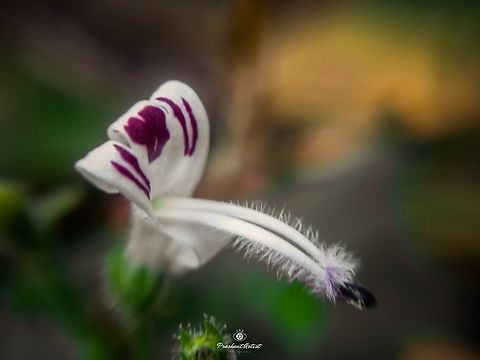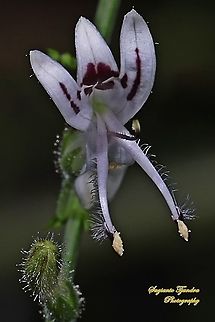
Appearance
The plant grows as an erect herb to a height of 30–110 cm in moist, shady places. The slender stem is dark green, square in cross-section with longitudinal furrows and wings along the angles. The lance-shaped leaves have hairless blades measuring up to 8 cm long by 2.5 cm. The small flowers are pink, solitary, arranged in lax spreading racemes or panicles. The fruit is a capsule around 2 cm long and a few millimeters wide. It contains many yellow-brown seeds. The seeds are subquadrate, rugose and glabrous. The flowering time is September to December.
Distribution
The species is distributed in tropical Asian countries, often in isolated patches. It can be found in a variety of habitats, such as plains, hillsides, coastlines, and disturbed and cultivated areas such as roadsides, farms, and wastelands. Native populations of "A. paniculata" are spread throughout south India and Sri Lanka which perhaps represent the center of origin and diversity of the species. The herb is an introduced species in northern parts of India, Java, Malaysia, Indonesia, the West Indies, and elsewhere in the Americas. The species also occurs in the Philippines, Hong Kong, Thailand, Brunei, Singapore, and other parts of Asia where it may or may not be native. The plant is cultivated in many areas, as well.Unlike other species of the genus, "A. paniculata" is of common occurrence in most places in India, including the plains and hilly areas up to 500 m, which accounts for its wide use.
In India the major source of plant is procured from its wild habitat. The plant is categorised as Low Risk or of Least Concern by the IUCN. Under the trade name "Kalmegh", on average 2,000–5,000 tonnes of the plant is traded in India.
References:
Some text fragments are auto parsed from Wikipedia.